
The schilling was the currency of Austria from 1925 to 1938 and from 1945 to 1999, and the circulating currency until 2002. The euro was introduced at a fixed parity of €1 = 13.7603 schilling to replace it. The schilling was divided into 100 groschen.
The dollar has been the currency of The Bahamas since 1966. It is normally abbreviated with the dollar sign $, or alternatively B$ to distinguish it from other dollar-denominated currencies. It is divided into 100 cents.

The lev is the currency of Bulgaria. In old Bulgarian the word "lev" meant "lion", the word 'lion' in the modern language is lаv. The lev is divided in 100 stotinki. Stotinka in Bulgarian means "a hundredth" and in fact is a translation of the French term "centime". Grammatically the word "stotinka" comes from the word "sto" (сто) - a hundred.
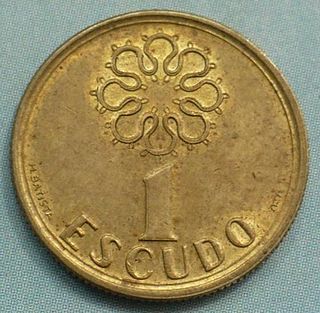
The Portuguese escudo was the currency of Portugal from May 22, 1911, until the introduction of the euro on January 1, 2002. The escudo was subdivided into 100 centavos. The word escudo derives from the scutum shield.
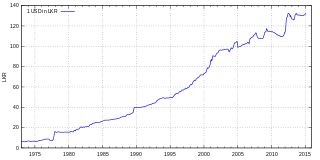
The Sri Lankan Rupee is the currency of Sri Lanka. It is subdivided into 100 cents, but cents are rarely seen in circulation due to its low value. It is issued by the Central Bank of Sri Lanka. The abbreviation Re (singular) and Rs (plural) is generally used, the World Bank suggests SL Rs as a fully disambiguating abbreviation for distinction from other currencies named "rupee".

The lilangeni is the currency of Eswatini and is subdivided into 100 cents. It is issued by the Central Bank of Eswatini and is authorised by the king and his family. The South African rand is also accepted in Eswatini. Similar to the Lesotho loti, there are singular and plural abbreviations, namely L and E, so where one might have an amount L1, it would be E2, E3, or E4.
The leone is the currency of Sierra Leone. It is subdivided into 100 cents. As of 1 July 2022, the ISO 4217 code is SLE due to a redenomination of the old leone (SLL) at a rate of SLL 1000 to SLE 1. The leone is abbreviated as Le placed before the amount.

The pound, or lira, was the currency of Cyprus, including the Sovereign Base Areas in Akrotiri and Dhekelia, from 1879 to 2007, when the Republic of Cyprus adopted the euro. However, the self-proclaimed Turkish Republic of Northern Cyprus uses the Turkish lira as its official currency.
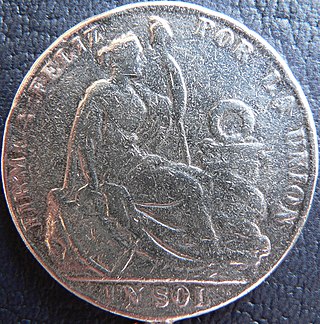
The sol, later sol de oro, was the currency of Peru between 1863 and 1985. It had the ISO 4217 currency code PES. It was subdivided into 10 dineros or 100 centavos. It also had two different superunits over its circulation life, the inca (1881-1882) and later the gold pound, both worth 10 soles.
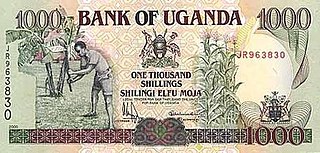
The shilling is the currency of Uganda. Officially divided into cents until 2013, due to substantial inflation the shilling now has no subdivision.
The vatu is the currency of Vanuatu. The vatu has no subdivisions.
The Congolese franc is the currency of the Democratic Republic of the Congo. It is subdivided into 100 centimes. However, centimes no longer have a practical value and are no longer used. In April 2022, 2,000 francs was equivalent to US$1.

The kyat is the currency of Myanmar (Burma). The typical notation for the kyat is "K" (singular) and "Ks." (plural), placed before the numerals followed by "/-"

The dinar is the currency of Tunisia. It is subdivided into 1000 milim or millimes (ملّيم). The abbreviation DT is often used in Tunisia, although writing "dinar" after the amount is also acceptable ; the abbreviation TD is also mentioned in a few places, but is less frequently used, given the common use of the French language in Tunisia, and the French derivation of DT.

The Guyanese dollar has been the unit of account in Guyana since 29 January 1839. Originally it was intended as a transitional unit to facilitate the changeover from the Dutch guilder system of currency to the British pound sterling system. The Spanish dollar was already prevalent throughout the West Indies in general, and from 1839, the Spanish dollar unit operated in British Guiana in conjunction with British sterling coins at a standard conversion rate of one dollar for every four shillings and twopence. In 1951 the British sterling coinage was replaced with a new decimal coinage which was simultaneously introduced through all the British territories in the Eastern Caribbean. When sterling began to depreciate in the early 1970s, a switch to a US dollar peg became increasingly attractive as an anti-inflationary measure and the Eastern Caribbean Currency Authority made the switch in October 1975. The Guyanese dollar is normally abbreviated with the dollar sign $, or alternatively G$ to distinguish it from other dollar-dominated currencies.
The Solomon Islands dollar is the currency of Solomon Islands since 1977. Its symbol is $, with SI$ used to differentiate it from other currencies also using the dollar sign. It is subdivided into 100 cents.

The shilling is the currency of Kenya. It is divided into 100 cents.
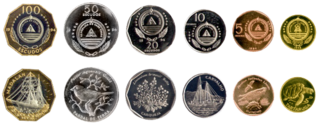
The escudo is the currency of the Republic of Cape Verde. One escudo is subdivided into one hundred centavos.
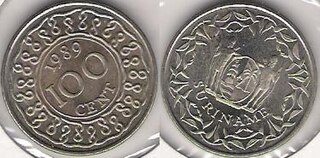
The guilder was the currency of Suriname until 2004, when it was replaced by the Surinamese dollar. It was divided into 100 cents. Until the 1940s, the plural in Dutch was cents, with centen appearing on some early paper money, but after the 1940s the Dutch plural became cent.
The Tuvaluan dollar is one of the currencies of Tuvalu, whose unofficial international currency code is TVD. Tuvalu has never had banknotes of its own, and has been issuing coins since 1976. However, the Tuvaluan dollar is used as a unit of account, and is pegged to the Australian dollar at parity. From 1966 to 1976, Tuvalu officially used the Australian dollar. In 1976, Tuvalu began issuing its own coins, which continue to circulate alongside Australian coins. Tuvalu continues to use Australian banknotes. Tuvaluan coins are not legal tender in Australia. Similar to the Faroese króna's relationship to the Danish krone and the Panamanian balboa's relationship to the United States dollar, the Tuvaluan dollar is not an independent currency, but a variation of the Australian dollar.



























































